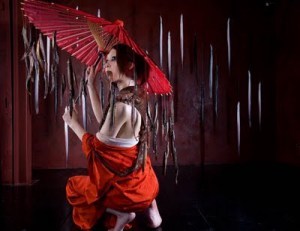Japan has always had this outrageous title of being the land of Hentai and tentacles. Sometimes, the two would even mix together and you would get this production of women with tentacles or having sex with them, or even eating them. A lot of people especially in the western world either finds this exciting or, just plain creepy. After all, in most cases, the Japanese will still eat the octopus or creature that they used for the pornography photos.
Now, Tentacle porn itself is this fascinating mix between the traditional pornography but, with added horror and science-fiction themes like what you would commonly see in movies. It is usually non-consensual but, consensual tentacle porn can be found. Tentacle rape or Shokushu goukan is in a lot of hentai and horror animation where the octopus like creature is with a female character. This is so popular in Japan because the Japanese has this obsession with cute things and anime. Thus, they love the idea of having sex with a female character whom is completely and totally cute. This genre is also becoming popular in the United States and Europe, along with parody’s of it as well. Although, tentacle porn is still considered more of a fetish topic and most of it is animated. (Some real-action stuff can still be found regardless.
Honestly, tentacle porn is barely even an outline for Japanese erotic. Lots of hentai frequently use non-tentacle rape and other sexual violence. Plus, they have the oddest of fetishes involving humans, animals, supernatural beings, robots, aliens and hybrids of all of this. People baffled by this either think this is just artistic world unrestrained by western notions of morality or, it’s the rigid of conformism of Japanese society which, offers lots of options for the inner pervert.

Tentacle creatures showed up in Japanese erotica was before animated pornography came to be. One of the most famous pieces of early instances is the novel Kinoe no kimatsu of 1814 by Katsushika Hokusai called the Dream of the Fisherman’s wife. It’s the most amazing example of Shunga and has been reworked several times. David laity of Australian even took the design into a painting of the same name and Masami Teraoka took the image up to date into his 2001 work “Sarah and Octopus/Seventh heaven”, part of his waves and plagues collection.
It has been known that most of the western world sees Tentacle erotica as purely rape but, Japanese audiences of the Edo period would have viewed it as consensual sex. The Japanese of the Edo period saw the Tentacles as part of the legend of a female abalone diver Tamatori. In the story of Tamatori, she steals a jewel from the Dragon king. During her adventure, the Dragon Kind and his Sea-life minions (Which include octopodes) go after her. During which, the diver and the Octopodes express mutual enjoyment.
There is a censorship in Japan that dates back to the Meiji period. It was an influence of victorian culture that was a catalyst for legislative interest in public sexual morals. Post-WWII the allies took on a number of reforms on the Japanese government which included the anti-censorship laws. While exposes genitalia (and until recently public hair) in Japanese pornography is illegal, the range of permissible sexual acts is now wide in compared with other legal democracies.
In the 1980’s even sensual scenes in bed were unacceptable. Thus, leaders of the tentacle porn industry came up with another idea to avoid all those laws against sex to make it more of an art form so the people can see it clearly. The animator Toshio Maeda states the following: “At that time [pre-Urotsuki Doji], it was illegal to create a sensual scene in bed. I thought I should do something to avoid drawing such a normal sensual scene. So I just created a creature. [His tentacle] is not a [penis] as a pretext. I could say, as an excuse, this is not a [penis], this is just a part of the creature. You know, the creatures, they don’t have a gender. A creature is a creature; So it is not obscene – not illegal.”
Another great artist, Daikichi Amano took even the most odd or impossible types of scenes into his work. The link to all of his art is below which, I cannot post a lot of the photos due to some nudity but, his work includes and is not limited to Fish, tentacles like octopus and squids, worms, frogs, etc into his art. He finds angel-faced women and pairs them with snakes and earthworms while contorted and interlaced eels slip into every orifice of the human body. Live toads are sucked on, cockroaches and larvae crawl and interweave into this mix of sensuality. Every animal possesses it’s own form of beauty Amano has made it his calling for their smooth and shiny surfaces.
Despite his work looking almost sicking, Daikichi Aman’s work is celebrated internationally. He composes insects and animals from nightmares and visions of frozen images of almost surreal beauty. He goes far beyond the realms of erotic imagination with an obsessive and perfectionist eye for detail. He is furthermore, inspired by the Dutch still-live painters as well as Japanese mythology and the great Ukiyo-E woodcut masters of the Edo period and in particular the erotic shunga prints.
NOT SAFE FOR WORK/SCHOOL!!!!
http://opium-fields.blogspot.com/2009/09/daikichi-amano-genki-and-art-of-eel.html
http://en.wikipedia.org/wiki/Tentacle_erotica
http://www.straightdope.com/columns/read/2968/whats-the-deal-with-japanese-tentacle-porn




.jpg)





